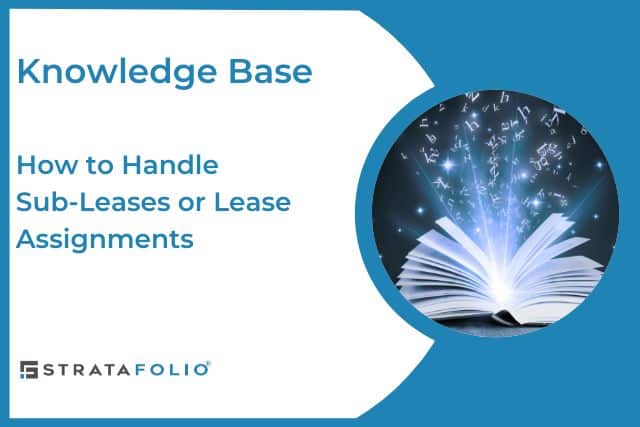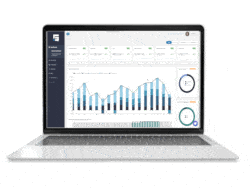When a tenant assigns or transfers a lease to another entity, such as in the case of an assumption or sub-lease, STRATAFOLIO provides two options to correctly manage the change.
You can either modify the existing lease to reflect the new tenant or close out the old lease and create a new one, depending on the lease terms.
Option 1: Handle the Sub-Lease by Modifying the Existing Lease
If the lease terms remain unchanged and the new tenant is simply assuming the existing lease, follow these steps:
- Add the New Tenant and Contact
- Navigate to Contacts and add a new Contact for the incoming tenant.
- Go to Tenants and add a new Tenant record.
- Edit the Existing Lease
- Search for the lease in STRATAFOLIO and click Edit Lease.
- Replace the old tenant with the new tenant.
- Under the Invoicing section, update the Accounting Customer to the new customer record synced from QuickBooks.
- Document the Change
- In the Lease Closing Notes, explain the situation briefly (e.g., “Lease assumed by Burlington Coat Factory after Jo-Ann Fabric bankruptcy”).
- Upload the assignment or sub-lease documentation to the Files tab of the lease record.
This approach ensures that the lease continues seamlessly under the new tenant while maintaining the financial and historical integrity of the record.
Option 2: Handle the Sub-Lease by Closing and Creating a New Lease
If the terms of the lease are changing, or if your accounting process requires a clean start:
- Close the existing lease by marking it as Expired.
- Create a new lease for the new tenant.
Use the article: How to Add a Lease and Assign a Unit.
This method provides a clear delineation between the two tenant agreements for reporting and audit purposes.
Best Practice
- Always include supporting documentation (e.g., bankruptcy filings, assumption agreements) in the Files tab.
- Double-check the QuickBooks Accounting Customer link to ensure proper synchronization.
- Note any relevant financial or legal transitions in the Lease Notes to maintain a complete audit trail.

